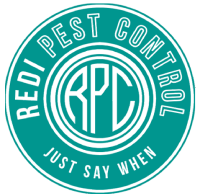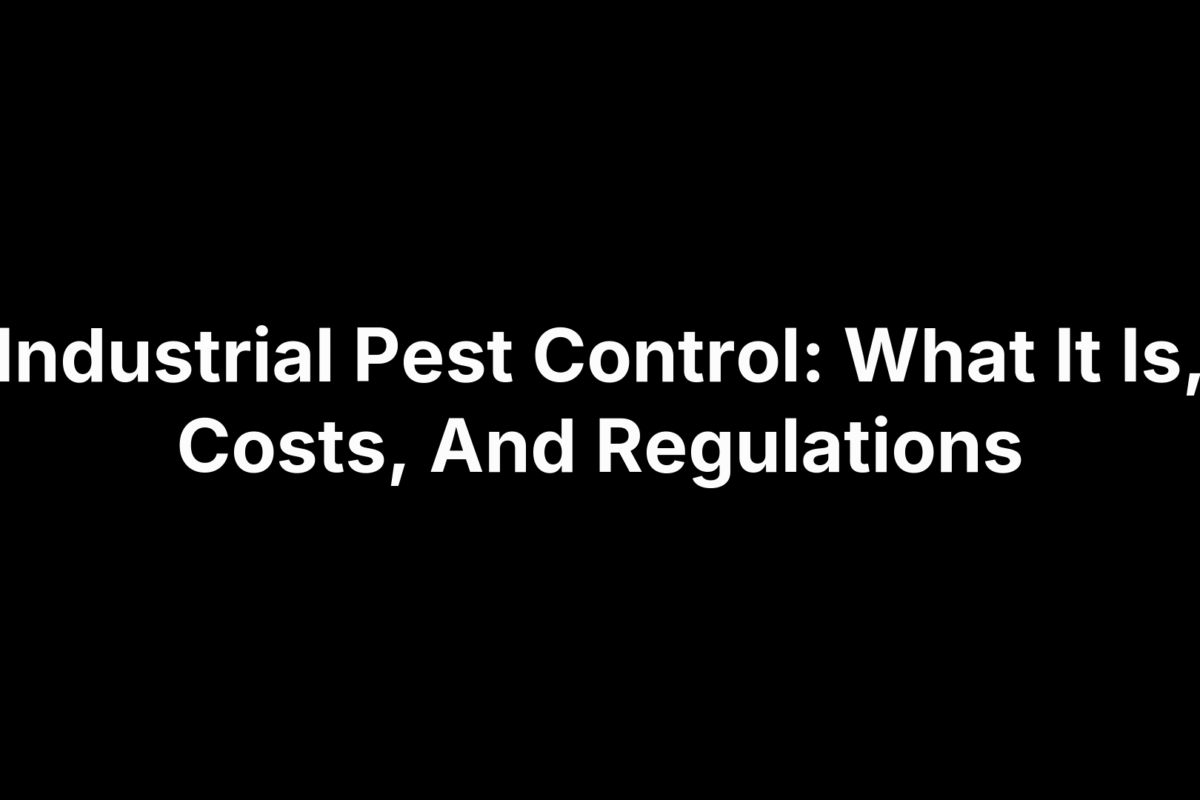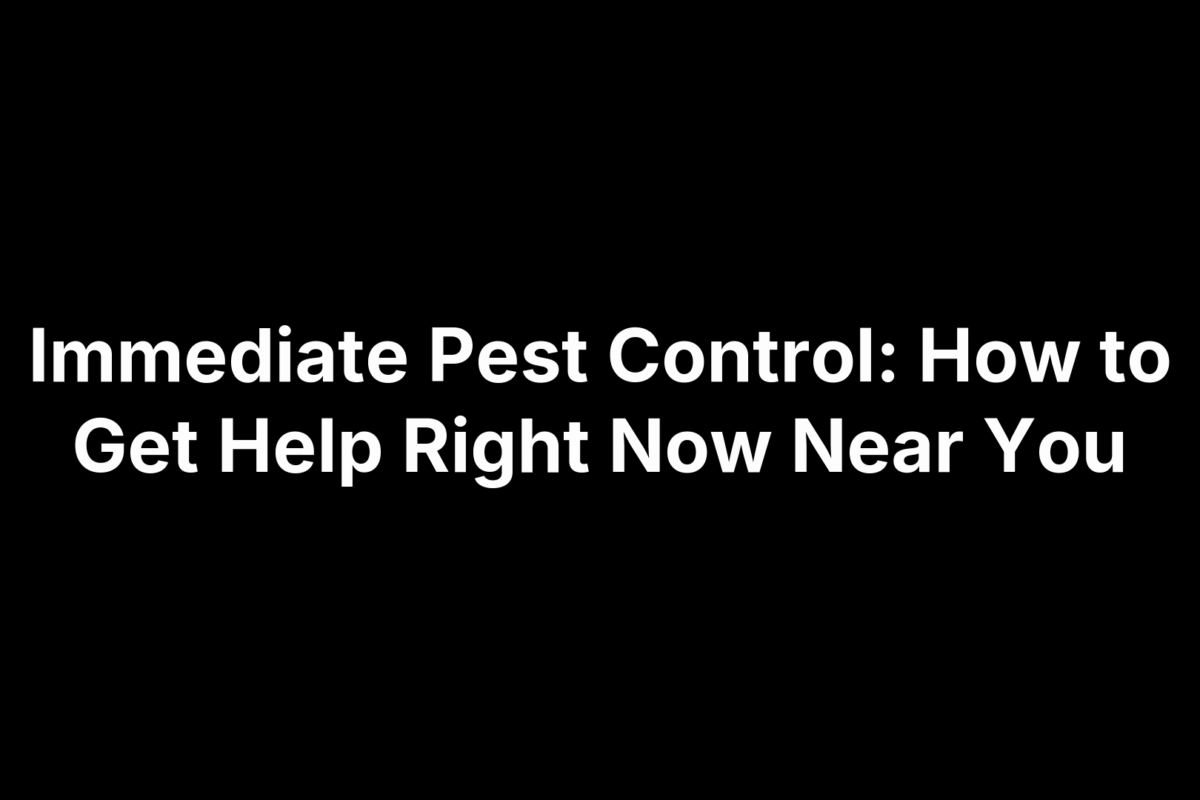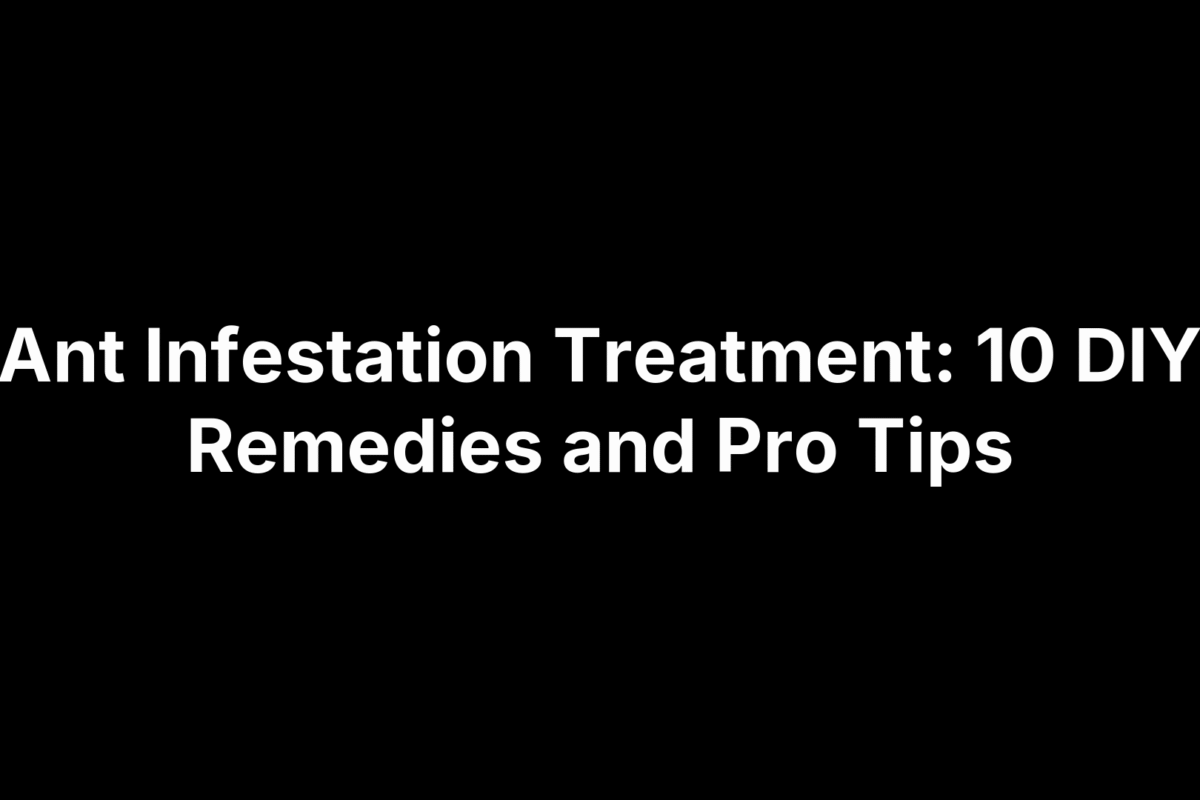Industrial pest control is the ongoing, facility-wide prevention and removal of pests in high-stakes environments—think warehouses, manufacturing plants, and food-processing sites—where a single mouse, fly, or beetle can disrupt production, trigger recalls, or fail an audit. It’s more than killing bugs: it’s a documented program that combines monitoring, sanitation, exclusion, and targeted treatments to protect people, products, and equipment while meeting strict safety and regulatory standards.
This guide explains what industrial pest control really involves, how it differs from commercial and residential work, and why it matters for uptime, compliance, and brand protection. You’ll see common pests by facility type, how integrated pest management (IPM) is executed at scale, the tools pros use, and how programs are designed, documented, and audited. We’ll cover U.S. regulations, pricing models and typical costs, specialty services like fumigation and bird control, safety and environmental considerations, incident response and CAPA, how to choose a provider, and what to expect in the first 90 days.
Industrial pest control vs. commercial vs. residential
All three serve the same purpose—keep pests out—but the stakes, scope, and documentation requirements change drastically by setting. Industrial pest control is built for production environments and audits; commercial programs protect customer-facing businesses; residential services protect families and property with minimal disruption. Here’s how they typically differ:
- Industrial: High-stakes, 24/7 prevention with device mapping, trending, and audit-ready records. Services align to production windows, emphasize exclusion and sanitation, and include root-cause analysis and CAPA when thresholds are exceeded in plants, warehouses, and food facilities.
- Commercial: Discreet, customer-safe control for offices, retail, restaurants, and multi-site portfolios. Focus on fast response, visible risk areas, and routine inspections with targeted treatments and basic reporting to meet brand standards.
- Residential: Comfort- and safety-first solutions with seasonal service, education, and targeted treatments. Minimal documentation, more flexible scheduling, and child/pet-conscious materials to quickly eliminate pests and prevent re-entry.
Why it matters: risks, downtime, and brand protection
In industrial environments, pests don’t just cause nuisance—they create risk. A single rodent sighting or insect web in a critical zone can stop a line, spoil inventory, and trigger corrective actions. Missed monitoring data or poor sanitation can fail a customer or third‑party audit, jeopardizing contracts. Effective industrial pest control minimizes unplanned downtime, protects worker safety and product integrity, and preserves your brand’s promise. The cost of prevention is predictable; the cost of a recall, shutdown, or lost certification is not.
- Operational continuity: Avoid line stoppages, scrapped batches, and emergency deep cleans.
- Regulatory confidence: Maintain audit-ready records and meet customer requirements.
- Food and product safety: Prevent contamination, adulteration, and returns.
- Brand protection: Reduce PR fallout, chargebacks, and contract risk.
Common pests by facility type
Pest pressure isn’t uniform; it’s shaped by your processes, materials, and building design. Effective industrial pest control anticipates these pressures so monitoring devices, sanitation priorities, and exclusion work target the right hotspots. Here’s what different facilities most often face—and why the mix matters for prevention and audits.
- Food processing & packaging: Rodents; stored‑product insects (flour beetles, Indianmeal moths); small/large flies; cockroaches at drains and breaks.
- Warehouses & distribution centers: Rodents entering via docks; birds on canopies; SPIs in packaged goods; spiders/occasional invaders in racking.
- Grain, milling & baking: Red flour beetles, sawtoothed grain beetles, weevils, and moths; flour dust harborage.
- Pharmaceuticals & cleanrooms: Occasional invaders and flying insects at entries; strict exclusion; perimeter rodent pressure.
- Non‑food manufacturing & campuses: Ants, spiders, wasps; rodents in mechanical voids; birds at loading docks and signage.
Integrated pest management for industrial facilities
Integrated pest management (IPM) is the operating system of industrial pest control. It prevents problems before they start, uses data to drive decisions, and reserves products for when they’re truly needed. In plants and warehouses, IPM is built around your processes—receiving, storage, production, sanitation, and waste flow—so service happens in safe windows without disrupting uptime. The result is fewer surprises, stronger audit performance, and a program that improves as your facility and seasons change.
- Risk assessment and zoning: Map sensitive areas, set thresholds, and align service to production.
- Monitoring and trending: Device mapping, counts, and analytics to target hotspots and adapt tactics.
- Sanitation and waste control: Remove food, moisture, and harborage; tighten cleaning around drains and docks.
- Exclusion and repairs: Seal penetrations, maintain door sweeps, dock levelers, and screening.
- Mechanical and cultural controls: Traps, light traps, airflow, inventory rotation, and staff practices.
- Targeted, label‑compliant treatments: Precise applications selected for the pest, place, and risk level.
- Documentation and CAPA: Record findings, implement corrective actions, and verify effectiveness.
- Training and partnership: Coach teams on doors, spills, receiving, and reporting to sustain gains.
Tools and technologies used in industrial programs
Strong industrial pest control pairs proven hardware with data you can act on. The aim is early detection, faster decisions, and audit-ready documentation without slowing production. Teams deploy mapped device networks, use remote alerts and pheromone lures to spot trends, and capture every finding in a digital logbook. Treatments stay targeted and label‑compliant while exclusion and sanitation tools remove the conditions pests need to survive.
- Device mapping and barcodes: Numbered stations and traps tied to site maps for traceable scans.
- Remote monitoring sensors: 24/7 alerts from rodent devices to cut checks and speed response.
- Insect light traps (ILTs): Safely capture flying insects and support placement-based trending.
- Pheromone monitoring (SPIs): Lures for beetles and moths to pinpoint sources and timing.
- Drain and moisture control tools: Biological foams, brushes, and meters to reduce breeding sites.
- Exclusion hardware: Door sweeps, brush seals, screening, and dock repairs to block entry.
- Digital records and analytics: Logbooks, labels/SDS, trend charts, and CAPA tracking for audits.
How programs are designed and delivered
Industrial pest control programs are engineered around your processes, risk zones, and audit expectations. The design phase translates facility realities—ingredients, traffic, sanitation, and shutdown windows—into a service plan with clear thresholds, maps, and KPIs. Delivery then runs on a predictable cadence with rapid exception handling so uptime and compliance stay on track.
- Discovery and risk mapping: Facility tour, document review, and zoning of sensitive areas; create a barcoded device map.
- Thresholds and service plan: Define action levels, inspection frequency, routes, and production‑safe service windows.
- SOPs and access: Site-specific procedures for entry, LOTO, permits, and product approvals.
- Sanitation and exclusion alignment: Joint tasks with QA/Maintenance to remove food, water, and harborage.
- Digital reporting cadence: Scan‑based logs, trend charts, and CAPA tracking with agreed KPIs.
- Seasonal and process adjustments: Rotate tactics for weather, ingredients, and layout changes.
- Exception management (CAPA): Root cause, corrective actions, verification, and escalation when thresholds are exceeded.
- Business reviews: Monthly/quarterly trend reviews, audit prep, and continuous improvement roadmaps.
Regulations and compliance requirements in the United States
In the U.S., industrial pest control runs on layered compliance: pesticide law, worker safety rules, and the site’s own GMPs and customer standards. At a minimum, products must be used exactly as their labels allow, applicators must meet state licensing requirements, and work must be performed in a way that protects employees, visitors, equipment, and goods. Facilities then add program expectations—zoning, thresholds, documentation, and CAPA—that align with their industry and audit commitments. The result is a preventive, documented system that can stand up to inspections without risking production or product integrity.
- Pesticide compliance: Follow federal label directions and state licensing/use requirements.
- Worker safety: Adhere to site safety rules (e.g., permits, LOTO), and maintain SDS/HazCom.
- GMP-aligned service: Match tactics to risk zones to prevent product or equipment contamination.
- Sanitation integration: Coordinate with cleaning and waste SOPs to remove food/water/harborage.
- Local codes: Respect health, building, and waste ordinances affecting pest conditions.
- Audit expectations: Maintain a documented IPM program with maps, logs, trends, and CAPA to satisfy customer and third‑party audits.
Documentation, reporting, and audit readiness
In industrial settings, documentation is the evidence of control. Each service should generate time‑stamped, traceable records tied to your device map and action thresholds, with trends that show proactive decisions and CAPA that closes the loop. Audit readiness means a reviewer can verify the same story on the floor and in the logbook—quickly, consistently, and without surprises.
- Program artifacts: Written IPM plan, risk map/zoning, service scope, and frequency.
- Device inventory and maps: Barcoded/numbered stations with locations, condition checks, captures, and bait/service status.
- Service records: Findings, actions taken, products used (names, amounts, locations), and technician credentials.
- Trend reporting: Counts by device/zone, SPI and ILT trends, heatmaps, seasonal comparisons, and exception flags.
- CAPA tracking: Root cause, corrective and preventive actions, verification, and closure dates.
- Product files: Current labels and SDS, site approvals, storage/disposal notes aligned with facility SOPs.
- Safety and compliance: Technician licenses, site safety acknowledgments, and required permits/sign‑ins.
- Audit prep: Pre‑audit checklists, mock audits, and monthly reviews to resolve gaps before inspection.
Keep a digital logbook with consistent naming and version control, and review it jointly with QA/Maintenance before every audit window.
Costs: pricing models, typical ranges, and budget planning
Industrial pest control budgets hinge on risk profile, audit load, footprint/complexity, pest pressure, service frequency, and the mix of devices and sensors. Most programs run as a recurring service with documented inspections, trend reviews, and rapid exception response, then layer in project work (shutdown cleanouts, bird work) as needed. Exclusion hardware and remote monitoring are capital-like add‑ons; fumigation and heat are separate, event‑driven projects.
- Program subscription: Monthly/quarterly fee covering inspections, monitoring, reporting, and basic materials.
- Per‑service pricing: Pay for visits as needed in low‑risk or startup phases.
- Device‑based add‑ons: Per rodent station, ILT, and pheromone point beyond the base.
- Remote monitoring: Per‑sensor subscription plus setup.
- Project work: Time‑bound pricing for drain remediation, shutdowns, bird netting/repellents, or fumigation.
- Multi‑site MSAs: Portfolio pricing with SLAs, consolidated reporting, and volume discounts.
Use a simple model to plan and compare bids:
annual_cost = base_program + (device_qty * device_rate) + (sensors * sensor_fee) + project_allowance + audit_support + training/time
Budget tips: set a seasonal contingency, align maintenance dollars for exclusion/repairs, and reserve pre‑audit intensification hours so production stays on schedule.
Specialty services: fumigation, heat, bird control, and exclusion
When standard IPM and targeted treatments aren’t enough, specialty services resolve entrenched problems and hard-to-reach harborage without dragging down production. These event-driven projects are scoped around shutdown windows, backed by detailed planning and documentation, and designed to restore control quickly while supporting compliance and audit readiness.
- Fumigation: Whole-structure or commodity gas treatments performed by licensed specialists to eliminate pervasive stored‑product insects or meet customer/export requirements; requires sealing, monitoring, and documented clearance before reentry.
- Heat treatment: Controlled, non‑chemical heat for rooms, equipment, or trailers to reach hidden life stages of insects; scheduled during downtime with validation records to confirm target exposure.
- Bird control: Netting, spikes, deterrents, and habitat changes at docks, canopies, and roof structures to prevent roosting and contamination; paired with sanitation and, where applicable, permits.
- Exclusion (structural hardening): Door sweeps, brush seals, dock leveler repairs, screening, and sealing utility penetrations to block entry and cut ongoing pressure; coordinated with Maintenance for durable results.
Safety, chemical use, and environmental considerations
In industrial pest control, safety sits above speed. Programs prioritize non‑chemical prevention and only deploy products when monitoring and thresholds justify them. Every application follows the label, respects risk zones, and fits production windows to protect people, equipment, and goods. Technicians work to site SOPs—permits, LOTO, PPE—with SDS and licenses on hand. Ventilation, reentry timing, and housekeeping are coordinated with QA and Maintenance so control never compromises compliance.
- Use the least risk first: Exclusion, sanitation, and mechanical controls before pesticides.
- Label- and zone‑compliant: Match active, form, and placement to sensitive and non‑sensitive areas.
- Application controls: Calibrate equipment; prevent drift/overspray; secure baits and isolate gels from food/contact surfaces.
- Ventilation and reentry: Observe intervals, lock/tag areas if needed, and document clearances.
- Environmental safeguards: Keep products from drains/soil, protect non‑targets, and stage spill kits and waste containers.
- Storage and disposal: Maintain labeled inventory, SDS, and proper waste handling with traceable records.
- Resistance management: Rotate actives, adjust tactics based on trends, and avoid blanket treatments.
Incident response: investigations, CAPA, and prevention
Even with a strong industrial pest control program, incidents happen: a rodent capture in a sensitive zone, SPI hits above threshold, or a fly trend that spikes before a customer visit. The goal is speed plus rigor—contain risk, find root cause, fix what failed, and lock in preventive changes—so production and audits stay protected and confidence returns quickly.
- Contain and communicate: Isolate the area, place holds if applicable, and notify QA, Maintenance, and key stakeholders with an initial incident record.
- Protect product and people: Quarantine impacted lots/equipment, secure devices, and adjust traffic/cleaning to stop spread or reentry.
- Investigate and document: Use the device map, trends, and floor checks to trace sources (doors, drains, receiving, sanitation gaps); capture photos and timelines.
- Corrective actions (CA): Remove harborage/food, repair exclusion, intensify monitoring/treatments within label and zone limits, and retrain where behaviors drove risk.
- Verification and release: Re‑inspect, trend for stability, and document criteria for lifting holds or returning to normal service.
- Preventive actions (PA): Update SOPs, route frequency, thresholds, or hardware (e.g., door sweeps, sensors); record lessons learned for future audits.
Close the loop with a CAPA entry in the digital logbook, assign owners and dates, and review status in the next business review. Use trend triggers to auto‑escalate recurrence, and schedule mock incidents to keep teams audit‑ready without disrupting uptime.
How to evaluate and select an industrial provider
Choosing an industrial pest control partner is a risk decision. You’re trusting a vendor to operate inside audited zones, document every action, and respond fast without disrupting production. The right provider proves capability with evidence: relevant site experience, audit-ready records, and a plan that fits your processes—not a generic route. Start with a facility walk, ask them to narrate what they see, and compare proposals for how they’ll prevent, monitor, document, and escalate issues across seasons and shutdowns.
- Industry experience: Proven work in audited manufacturing, food, or warehousing; site references.
- Licensing and safety: Current state licenses, insurance, SDS/HazCom, and adherence to your permits/LOTO.
- Program design: Risk zoning, device maps, thresholds, and site‑specific SOPs—not one-size-fits-all.
- Documentation: Digital logbook, labels/SDS, trend analytics, and CAPA workflows ready for audits.
- Response and SLAs: Defined emergency response times, escalation paths, and after‑hours coverage.
- Tools and tech: Remote sensors, ILTs, pheromones, and exclusion hardware with maintenance alignment.
- Specialty capability: Fumigation, heat, bird control, and structural exclusion—planned around downtime.
- Collaboration: QA/Maintenance training, joint sanitation/exclusion tasks, and regular business reviews.
- Transparent pricing: Clear base program, device/sensor rates, project work, and audit support hours spelled out.
What to expect in the first 90 days
A strong start balances quick wins with airtight documentation. Expect your provider to stabilize conditions fast, stand up a digital logbook, and align with QA/Maintenance so monitoring, sanitation, and exclusion move together. By day 90, you should see clear trends, closed CAPA items, and a predictable service rhythm that fits production windows and audit requirements.
-
Days 0–30: Baseline and quick wins. Kickoff, safety onboarding, and risk zoning; barcoded device map installed; drain and dock cleanups; door sweep fixes; initial targeted treatments; digital logbook launched with labels/SDS and licenses. Early trend reports highlight hotspots and simple behavior fixes (doors, waste).
-
Days 31–60: Trend‑driven adjustments. Refine device placements and thresholds; add pheromones/ILTs where data warrants; coordinate sanitation gaps and minor exclusion repairs; begin CAPA on any exceedances; conduct brief staff training for receiving and door discipline.
-
Days 61–90: Stabilize and scale. Verify trend improvement; lock SOPs and service cadence; finalize seasonal plan and sensor add‑ons; close CAPA with verification; hold a business review to align KPIs, audit prep, and a 6–12 month improvement roadmap.
Key takeaways
Industrial pest control is a documented, preventive program built around your processes, not just treatments. When it’s designed on IPM principles, aligned to audits, and delivered with data, you minimize downtime, protect product integrity, and control costs predictably—season after season and inspection after inspection.
- Design for risk: Zone the facility, set thresholds, map devices, and align to production windows.
- Lead with prevention: Sanitation, exclusion, and monitoring before chemicals.
- Prove it with data: Digital logbooks, trends, and CAPA close the loop.
- Plan for exceptions: Incident response, specialty services, and business reviews keep control resilient.
Ready to turn pest control from a cost center into a controlled process? Get an audit-ready program, rapid response, and clear reporting with Redi Pest Control. Let’s map your risks, stabilize hotspots, and build a 90-day roadmap that fits your operation.






